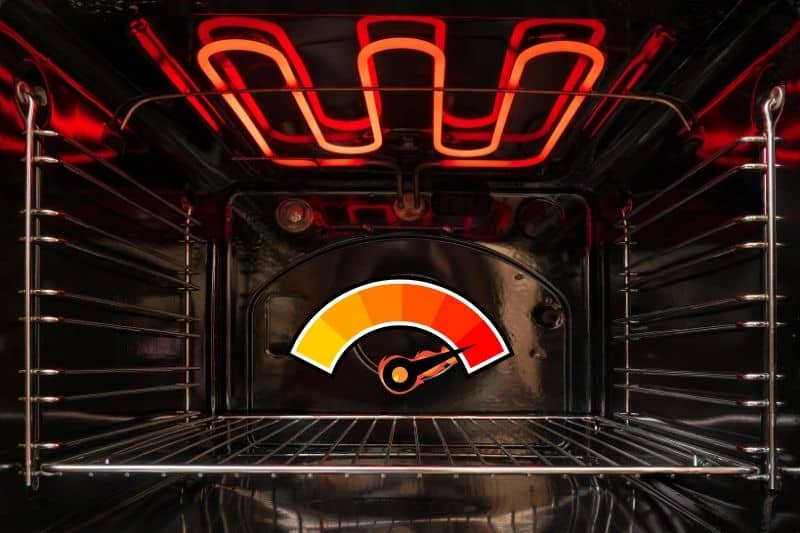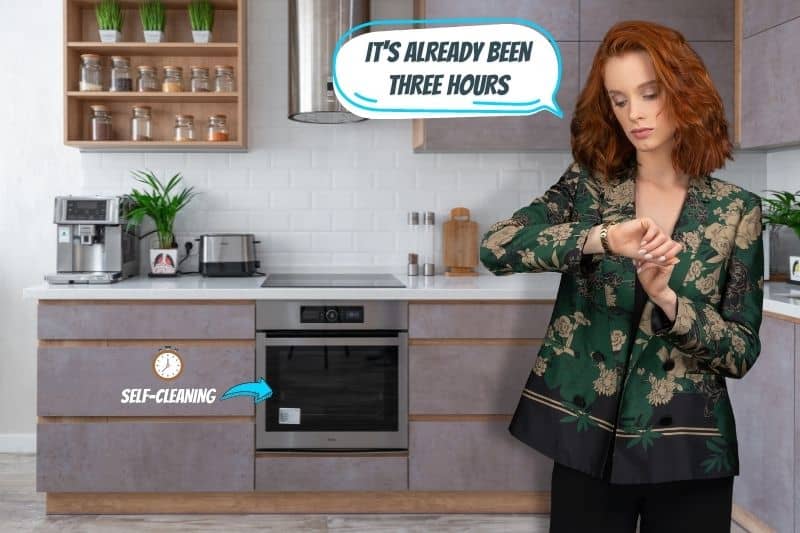The very first self-cleaning function on an oven was introduced in 1963. However, this function was very rare and usually regulated to high-end ovens and cookers. Now, though, a lot of modern ovens have this self-clean function.
If you’ve never used the self-clean function, you may have some questions. Below, we’re answering how long the self-cleaning function takes, and some other commonly asked questions.
We also have other articles about these ovens that go into more detail about this function and which are the best self-cleaning ovens in the UK right now too.
How Long Does Self-Cleaning on an Oven Take?
The average self-cleaning time for an oven is three hours.
Some models speed through the cleaning in two hours, while some can take up to six hours to complete the task.
During the cleaning, your oven door will stay locked. This is to prevent smoke, toxic fumes and nasty smells from entering your kitchen.
How Long Will the Oven Door Stay Locked During Self-Cleaning?

The oven door will stay locked throughout the self-cleaning process. So, on average, the oven door will stay locked for about three hours.
This is because the oven reaches much higher temperatures than during the normal cooking process.
Ovens can reach up to 500 degrees Celsius during the cleaning cycle. So, one of the reasons the door stays locked is to protect you from burning yourself.
Is it Okay to Be Around a Self-Cleaning Oven?

Even though the oven door stays locked during the cleaning cycle, dangerous fumes and smoke can get into the air of your kitchen.
If you have an extraction unit in your kitchen, you should turn this one during the cleaning process. This will ensure that all of the air is cleaned and prevent any dangerous fumes from affecting you.
If you don’t have an extraction unit, you should open some windows in your kitchen and try to create a through draft to force the fumes and smells out of the window.
We wouldn’t recommend being in the kitchen while the self-cleaning process is running. It is better to run this cleaning program while you’re tidying other areas of the house or just relaxing watching TV in another room.
This ensures that if any fumes do make it into your kitchen, you’re far enough away that they won’t affect you.
How Does the Self-Cleaning Function on an Oven Actually Work?

You may be wondering why your oven can emit dangerous fumes and why it is so hot during this cleaning cycle.
Well, the way a self-clean programme on an oven works is by burning off all of the burnt-on food and grime. So, it heats the oven to a very high temperature and turns the food to ash.
You can then wipe away all of the ash once the oven has finished the cycle and cooled down.
It is a very effective way of cleaning an oven. It means you don’t need to clean your oven too regularly.
However, if you do enjoy cleaning your oven regularly, you may never need to use the self-cleaning function on yours.
Most people reserve the self-cleaning programme for when they have missed a few cleaning sessions.
We hope this look at self-cleaning ovens and how long the process takes has been helpful. Remember, we have lots of other self-cleaning oven articles on here.
So, if you’ve never owned a self-cleaning oven or never used the function before, we have an article to help you.

Scott is a writer and a passionate home chef. His passion for cooking began when he was 10 years old. Scott has been writing professionally for over five years now and loves to combine his passion for cooking with his day job.







